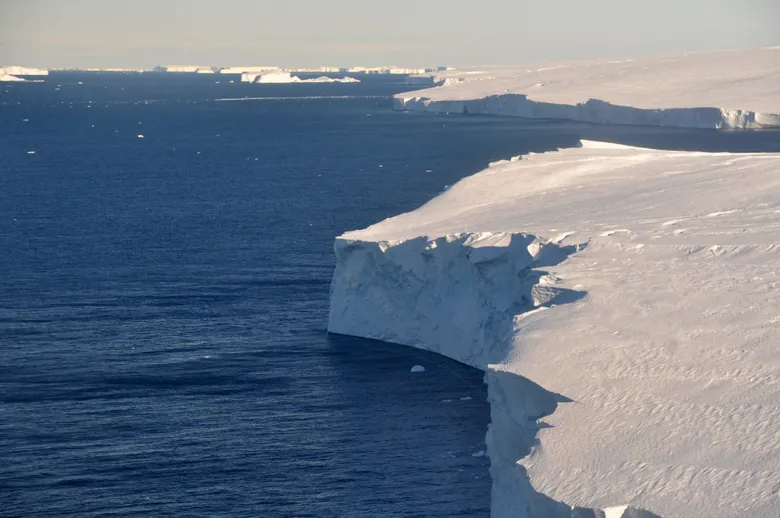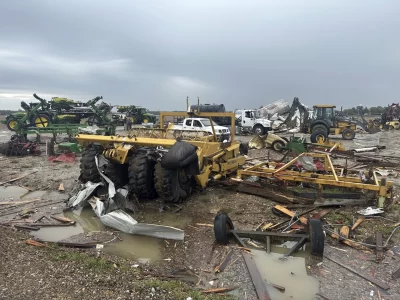
No matter how much the world cuts back on carbon emissions, a key and sizable chunk of Antarctica is essentially doomed to an “unavoidable” melt, a new study found.
Though the full melt will take hundreds of years, slowly adding nearly 6 feet (1.8 meters) to sea levels, it will be enough to reshape where and how people live in the future, the study’s lead author said.
Researchers used computer simulations to calculate future melting of protective ice shelves jutting over Antarctica’s Amundsen Sea in western Antarctica. The study in Monday’s journal Nature Climate Change found even if future warming was limited to just a few tenths of a degree more – an international goal that many scientists say is unlikely to be met – it would have “limited power to prevent ocean warming that could lead to the collapse of the West Antarctic Ice Sheet.”
“Our main question here was: How much control do we still have over ice shelf melting? How much melting can still be prevented by reducing emissions?” said study lead author Kaitlin Naughten, an oceanographer at the British Antarctic Survey. “Unfortunately, it’s not great news. Our simulations suggest that we are now committed to the rapid increase in the rate of ocean warming and ice shelf melting over the rest of the century.”
While past studies have talked about how dire the situation is, Naughten was the first to use computer simulations to study the key melting component of warm water melting ice from below, and the work looked at four different scenarios for how much carbon dioxide the world pumps into the atmosphere. In each case, ocean warming was just too much for this section of the ice sheet to survive, the study found.
Naughten specifically looked at what would happen if somehow future warming was limited to 1.5 degrees Celsius (2.7 degrees Fahrenheit) over mid-19th century levels — the international goal — and found the runaway melting process anyway. The world has already warmed about 1.2 degrees Celsius (nearly 2.2 degrees Fahrenheit) since pre-industrial times and much of this summer temporarily shot past the 1.5 mark.
Naughten’s study concentrated on the part of the West Antarctic Ice Sheet that is most at risk from melting from below, near the Amundsen Sea. It includes the massive Thwaites ice shelf that is melting so fast it got the nickname “the Doomsday Glacier.” West Antarctica is only one-tenth of the southern continent but is more unstable than the larger eastern side.
That part of Antarctica “is doomed,” said University of California Irvine ice scientist Eric Rignot, who wasn’t part of the study. “The damage has already been done.”
University of Colorado ice scientist Ted Scambos, who also wasn’t part of the study, said this ice sheet “eventually is going to collapse. It’s not a happy conclusion and it is one that I’m only saying reluctantly.”
Naughten doesn’t like to use the word “doomed,” because she said 100 years from now the world might not just stop but reverse carbon levels in the air and global warming. But she said what’s happening now on the ground is a slow collapse that can’t be stopped, at least not in this century.
“I think it’s unavoidable that some of this area is lost. It’s unavoidable that the problem gets worse,” Naughten told The Associated Press. “It isn’t unavoidable that we lose all of it because sea level rise happens over the very long term. I only looked in this study up to 2100. So after 2100, we probably have some control still.’’
No matter what words are used, Naughten said she and other scientists studying the area in previous research conclude that this part of Antarctica “couldn’t be saved or a lot of it couldn’t be saved.”







